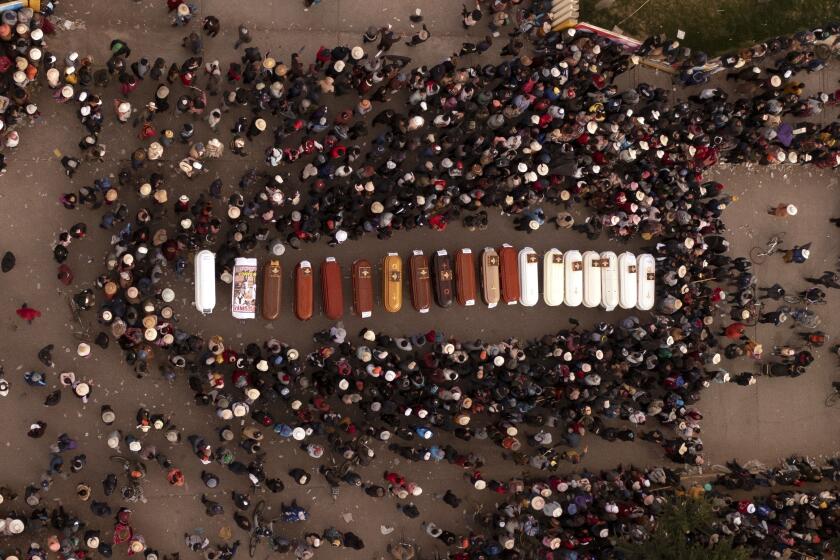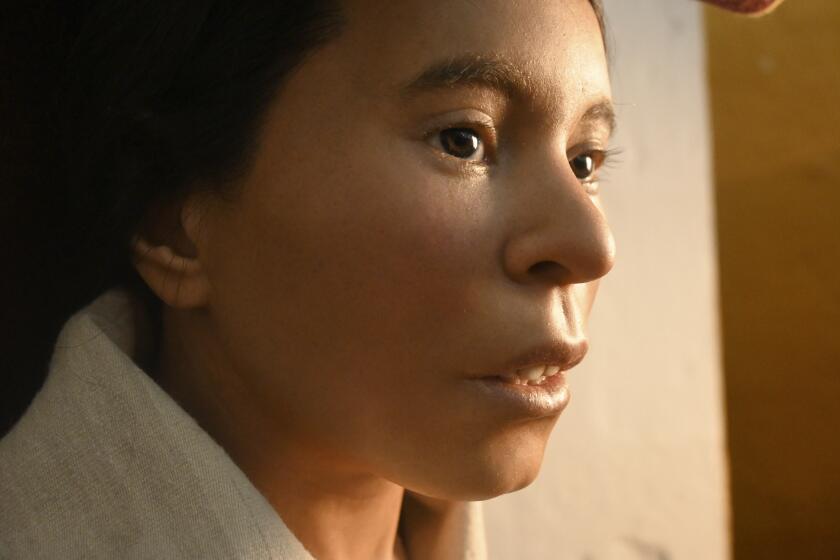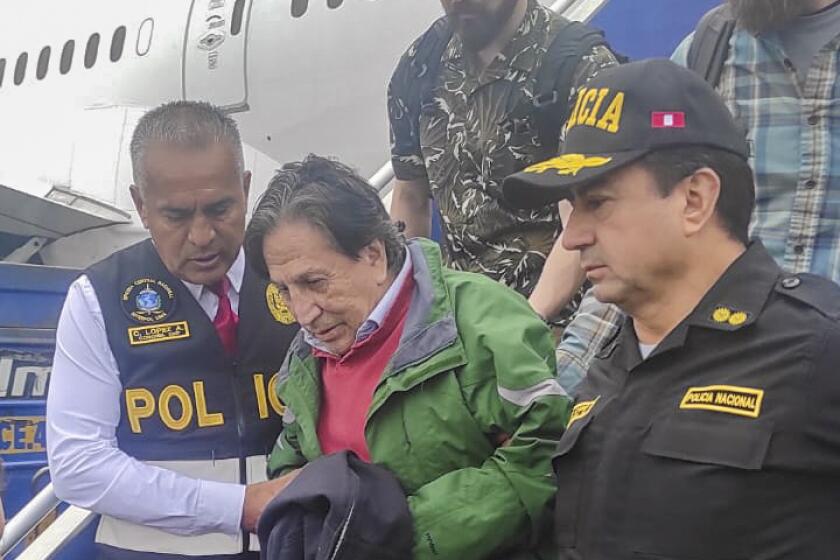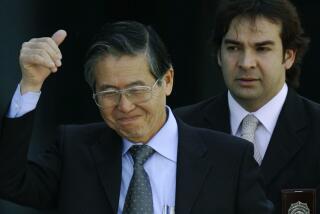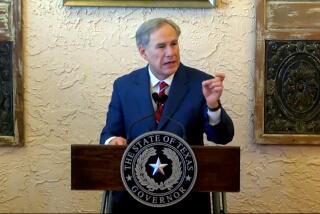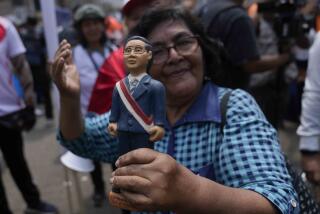Former Peruvian President Alberto Fujimori freed from prison on humanitarian grounds
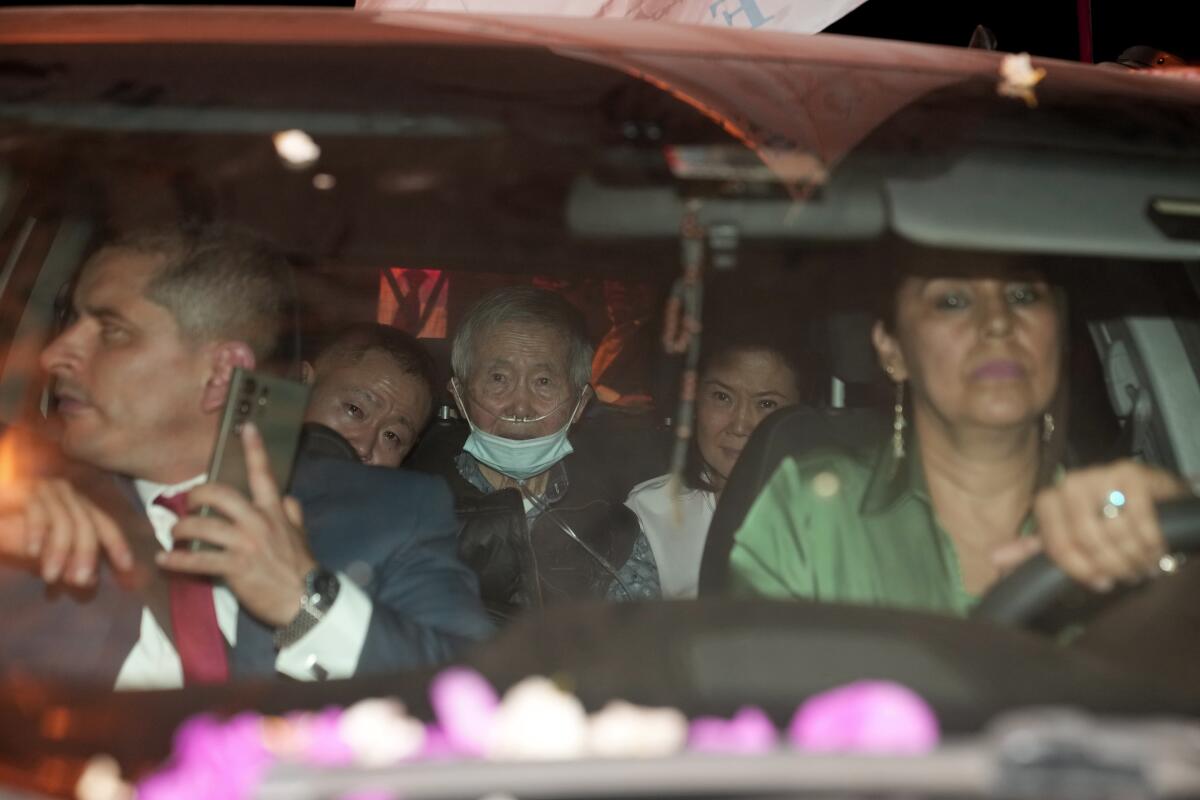
LIMA, Peru â Former Peruvian President Alberto Fujimori was released from prison Wednesday on humanitarian grounds, despite a request from a regional human rights court to delay his release.
Fujimori, 85, was serving a 25-year sentence in connection with the slayings of 25 Peruvians by death squads in the 1990s. Peruâs constitutional court ordered his immediate release Tuesday, but the Inter-American Court of Human Rights asked for a delay to study the ruling.
Fujimori, who governed Peru from 1990 to 2000, was sentenced in 2009 on charges of human rights abuses. He was accused of being the mastermind behind the slayings of the 25 Peruvians while the government fought the Maoist rebel group Shining Path.
Fujimori, wearing a mask and receiving supplemental oxygen, walked out of the prison door and got into a sport utility vehicle driven by his daughter-in-law. He sat in the back seat with his son and his daughter, the right-wing politician Keiko Fujimori.
Dozens of supporters awaited Alberto Fujimori outside the prison and swarmed the vehicle as it attempted to move. It moved slowly through the streets of the prisonâs neighborhood as people chanted and banged on the windows.
Fujimori is expected to live at this daughterâs house.
Human rights groups have called on the Peruvian government to investigate claims of excessive force during recent protests that have left 49 civilians dead.
Peruâs Constitutional Court on Tuesday ruled in favor of a humanitarian pardon granted to Fujimori on Christmas Eve in 2017 by then-President Pablo Kuczynski. The countryâs Supreme Court overturned the pardon under pressure from the Inter-American Court of Human Rights in 2018 and ordered the former president returned to prison to serve out his sentence.
In Tuesdayâs ruling, the magistrates explained that while âthe seriousness of the crimes for which [Fujimori] was sentenced is evident,â they could not âignore ... the humanitarian pardonâ granted him in 2017 and upheld by their court in 2022.
âIf, according to the ruling of this Court in March 2022, the judicial resolutions that left the 2017 humanitarian pardon without legal effect were declared null, then [Fujimori] has been pardoned for almost six years without his freedom having been made effective to this day, which constitutes an obvious violation of this fundamental right,â according to the ruling, which also considered Fujimoriâs advanced age and poor health.
After the Constitutional Court issued its latest ruling, the president of the Inter-American Court of Human Rights, Ricardo PĂŠrez Manrique, in a resolution asked for the delay of Fujimoriâs release in order to âguarantee the right of access to justiceâ for the 25 people who were murdered in two massacres.
Scientists unveiled the possible face of Peruâs most famous mummy, a teenage Inca girl sacrificed in a ritual more than 500 years ago atop the Andes.
âWe do not have institutions of any kind capable of defending us,â Gisela Ortiz, sister of one of the victims, told the Associated Press. âPeru gives the image of a country where the rights of victims are not guaranteed and where human rights issues have no importance.â
The United Nations High Commissioner for Human Rights, Volker Turk, on Wednesday said the Constitutional Courtâs order to release Fujimori âis a worrying setback,â adding that âany humanitarian release of those responsible for serious human rights violations must be in accordance with international law.â
Fujimori remains a polarizing figure in Peru. His policies improved the countryâs economy and pulled it out of a cycle of hyperinflation. But he also used the military to dissolve Congress and rewrite the constitution as well as to crack down on guerrilla violence.
The first of the two massacres he is accused of plotting occurred in 1991 in a poverty-stricken Lima neighborhood. Hooded soldiers fatally shot 15 residents, including an 8-year-old child, who had gathered at a party.
Former President Alejandro Toledo has arrived in Lima after being extradited from the United States to face charges he received millions of dollars in bribes in a scandal that has ensnared four of Peruâs ex-presidents.
Then, in 1992, the clandestine military squad kidnapped and killed nine students and a professor from the Enrique GuzmĂĄn y Valle University. Forensic experts reported that the victims were tortured and shot in the back of the head. Their bodies were burned and buried in common graves.
The squad operated in the guise of an architecture firm and was financed by Fujimoriâs government.
The accusations against Fujimori have led to years of legal wrangling. He resigned just as he was starting a third term and fled the country in disgrace after leaked videotapes showed his spy chief, Vladimiro Montesinos, bribing lawmakers. Fujimori went to Japan, his parentsâ homeland, and sent in his resignation by fax.
Five years later, he stunned supporters and enemies alike when he flew to neighboring Chile, where he was arrested and extradited to Peru. Fujimoriâs goal was to run for Peruâs presidency again in 2006, but instead, he was put on trial.
More to Read
Sign up for Essential California
The most important California stories and recommendations in your inbox every morning.
You may occasionally receive promotional content from the Los Angeles Times.
